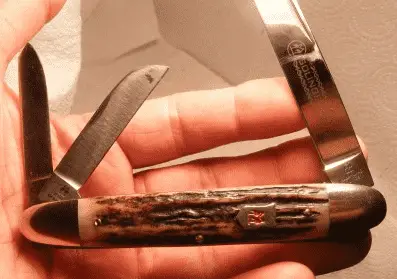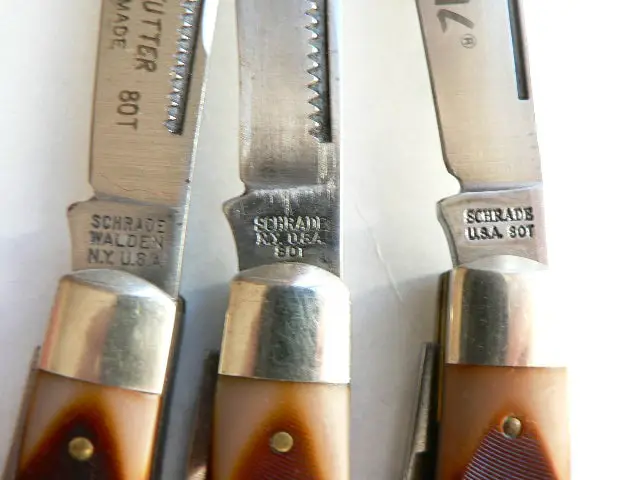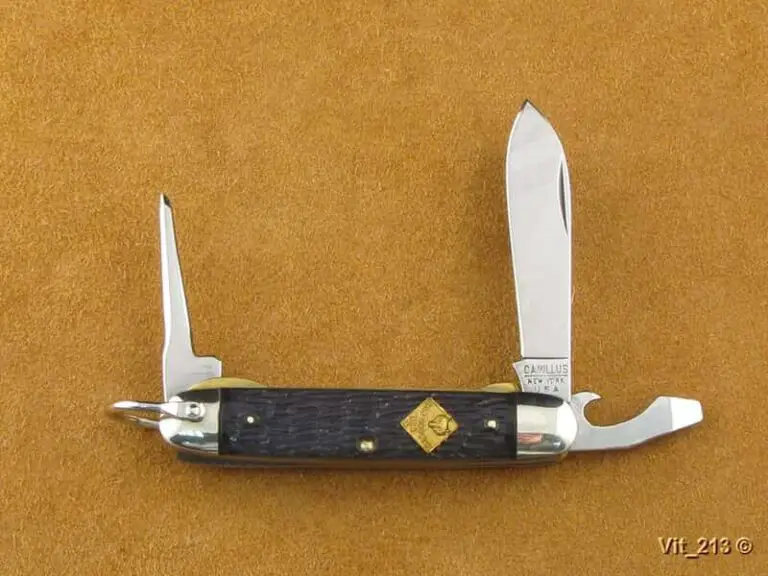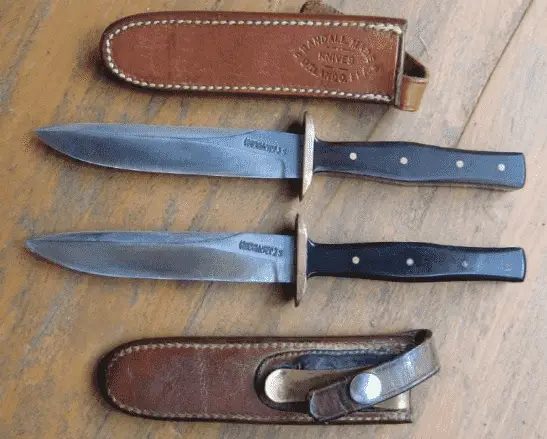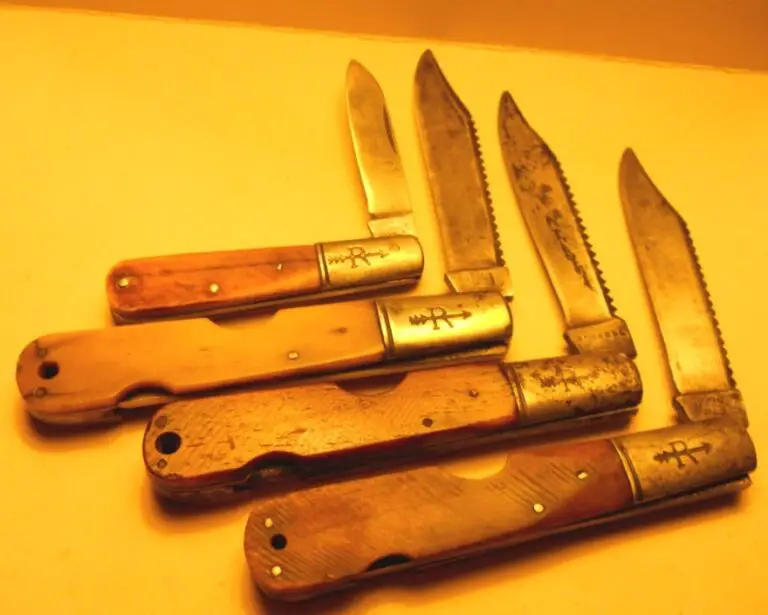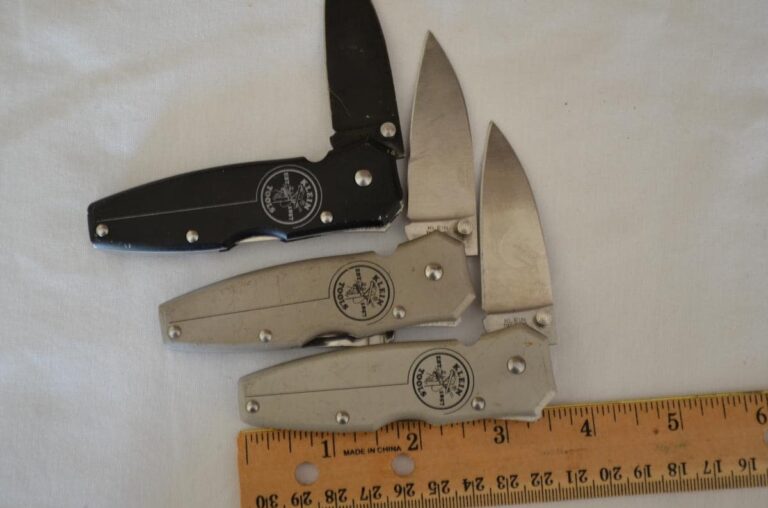The kissing crane knives are some of the most well-made, long-lasting, and historical knives that we can still find around today.
While some other companies have taken over the design and started to make modern versions, there is simply nothing like the older units that first came out under the original Klaas company.
If you happen to have one of such kissing crane knives, it makes sense that you want to know when it was made and ascertain how original it is.
Thus, today’s guide on how to date a kissing crane knife effectively.
But first…
Table of Contents
What is a Kissing Crane Knife?
There seems to be a lot of disconnect about what the kissing crane knife is and what it is not.
The kissing crane knife is a brand of knives, spanning normal knives to pocket knives, developed by the Robert Klaas Company (in Germany) in 1895. The knives enjoyed stellar sales and popularity due to their being well made from premium materials sourced and assembled in Germany, making them a force to be reckoned with among users who are particular about knife quality.
The misconception that kissing crane knives are only pocket knives stems from the demand for pocket knives in the US which the Robert Klaas Company stepped in to fill.
Around this time, the German knives were known to be of high quality and quickly caught on in the country. That is why we have a number of them around in the US till today – and why they have suddenly become a collector’s item since the manufacturer went out of business.
Multiple Methods to Dating a Kissing Crane Knife

Dating a kissing crane knife can be tricky and for many reasons. I have discussed all of that in the next section.
When you have one at hand but do not know what era it came from, or if it is even original at all, try the following:
Take it to a knife expert – The best approach
Think about it.
These experts have spent a good deal of their lives learning about knives and they have probably come across a lot of literature on these knives anyway. That would put them in a better place to identify unique elements on the knife which you might have missed, pointing to what era the knife came from.
When going with this approach, make sure to only go with trustworthy knife professionals and experts. The unscrupulous ones might lie about the true details of your knife so that they can get it from you at a giveaway price. That is less than professional but such people do exist.
Once you can find a solid knife expert to take the knife to, try them out.
PS Taking your kissing crane knife to an expert does not mean that they would know anything about it. Some of these experts might be specialists on other kinds of knives, might not be interested in the kissing crane knife at all, or miss the mark for a couple of other reasons.
Try any of the other approaches below too.
Dating an Older Kissing Crane Knife (Pre 1990)
The first set of kissing crane knives made the market from the 1980s through the 1990s. As such, they will also be the most expensive collector items today and you can get a good price for them if you were to be selling any one of such knives in your possession.
Here is how to identify them before you attempt dating at all:
- The number of blades – the older kissing crane knives usually had two different blades. These blades had varying sizes and shapes and were intended for different purposes.
- Numbering system – looking around both blades, you will usually find a four-number system stamped on it. The numbers are stamped on the parts of the blade that do not wear (like the edges)
- Logos – you won’t find any logos on most kissing crane knives from this era. Since they were made from just one country and company, there was no need to stamp a logo on them. Likewise, most of the kissing crane knives that made it to the US came in through the United Cutlery company, so they might not have been fans of having big logos that weren’t theirs on the knives.
- Form – as already mentioned, most older kissing crane knives occur as folding knives. That is one of the easiest ways to identify any kissing crane knife at all, not just the older ones.
Once you have the above set, date the knife with the following steps:
Identify the Numbers
There should be an Arabic numeral system stamped on the body of the blade. This four-number system is designed to tell you the pattern of the knife, the number of blades that it comes with, and what material the handle was made with.

For example, the kissing crane knife above carries a 3235 Arabic numeral stamp. That breaks down into:
- Pattern – 32
- Number of blades – 3
- Handle material – 5 (stag/ deer antler handle material)
While the first two are easy to decipher, according to the above, you might have some challenges with identifying the handle material based on the number alone. Here are some common others:
- 1 – solid hardwood
- 3 – smooth yellow synthetic
- 8 – Genuine mother of pearl
- 9 – Imitation mother of pearl
- 10 – Micarta, G-10
You can find more handle material codes in this online library of knife pattern codes.
Identify the Numerals
Besides the numbers, you will also find Roman Numerals on the older kissing crane knives. This was a mainstay between 1972 – 1986. So, even if you didn’t know how to read the Roman Numerals, you know that your kissing crane knife was made within this period if you find roman numerals on it.
Fortunately for you, reading the numerals is as easy as it comes.
The Roman numeral stamps started with XI in 1972, and every year has seen an incremental addition since then.
Thus, you will interpret:
- XII as 1973
- XIII as 1974
- XIV as 1975
- XV as 1976
… and so on, up till 1986.
Combined, you have now dated your older kissing crane knife, even knowing the materials that it comes with.
Dating a Newer Kissing Crane Knife (1990 – today)
The newer kissing crane knives are a little bit dicier. The fact that the original Klaas company went out of business and other manufacturers took up the name has diluted the market a little bit.
Still, we can attempt to date these knives sometimes.
Here are the first things to look out for:
- A ‘KC’ insignia – this KC stamp precedes the numbers or other details on the new knives. Once you see that, know that your knife is from 1990 or later.
- Stamp – all-new knives in this category carry at least one stamp. The stamp can be the identifying Arabic numerals as shown above, or simply the logo of the company that makes the knives. It is also not uncommon to see a stamp on multiple blades on these knives.
While it is much more challenging to determine the exact year of the newer models, you might check with the manufacturer’s website to establish that.
Pitfalls of Dating a Kissing Crane Knife
As you must have seen, getting the right details on your kissing crane knife is no child’s play.
Among other things, the common challenges that you could face include:
- Not having access to the right databases – when this happens, the numbers might remain numbers to you. I have linked to a guide above that shows you what each number means on the handle part, at least.
- Blurred numbers – while manufacturers will usually stamp the numbers on areas where wear and tear won’t happen, these markings could still get scratched out. When that happens, it becomes harder to date the knife properly.
- New companies – the initial company that started this kissing crane knife movement was based in Germany. Over time, they moved around to countries like Taiwan, among others, to ensure production at less expensive rates. Now that they have been taken over by yet another brand, all that mix-up could get you lost as to where your knife came from and when.
Final Words
Effectively dating a kissing crane knife is not rocket science, as long as you can pay attention and identify the relevant details. Applying the strategies discussed in this piece, you should have a better chance of getting relevant details about your knife than before.

